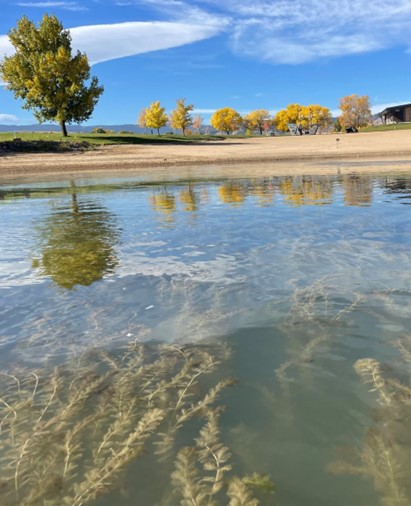Boulder Reservoir is an important water supply and recreational resource. The plant has spread significantly in the western coves and swim beach, impacting recreational uses such as swimming and boating. EWM forms thick underwater mats, which can entangle propellers, oars and paddles making it difficult for watercraft to navigate. It can also be dangerous to swimmers as the dense vegetation poses a risk of entanglement.
Without management, EWM could lead to water quality and water supply impacts. Potential impacts include taste and odor in drinking water, clogging of the 63rd Street water treatment plant intake or Northern Water’s supply canal for downstream water users and/or reduced water storage capacity due to plant biomass.
Impacts to aquatic life could include alteration to fish habitats, species composition changes or die-offs. EWM can alter nutrient cycling in aquatic ecosystems. Its decay can release nutrients back into the water column, potentially causing algal blooms.
